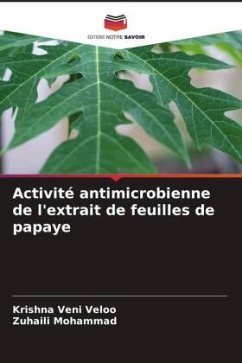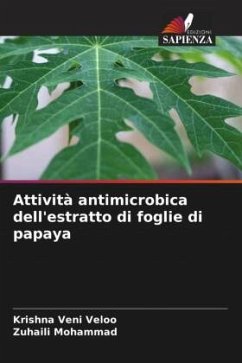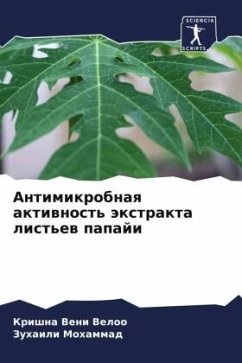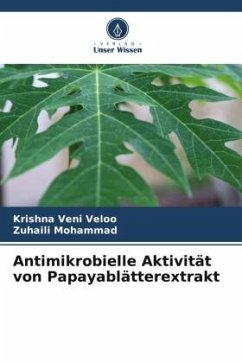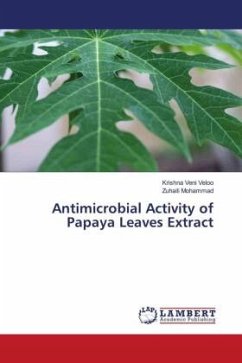
Antimicrobial Activity of Papaya Leaves Extract
Versandkostenfrei!
Versandfertig in 6-10 Tagen
29,99 €
inkl. MwSt.

PAYBACK Punkte
15 °P sammeln!
The extraction and isolation of Carica Papaya Leaf extract were investigated under different solvents along with the antimicrobial activity of the plant's extract. The Carica Papaya leaves were macerated with different type of solvents (methanol, hexane, ethyl acetate and distilled water) at room temperature for 3 days. Thin layer chromatography and column chromatography were used to isolate the compounds under varied solvent combinations. The fraction from column chromatography were further analyzed using Gas Chromatography Mass Spectrometry (GC-MS). Disc diffusion method were used to evaluat...
The extraction and isolation of Carica Papaya Leaf extract were investigated under different solvents along with the antimicrobial activity of the plant's extract. The Carica Papaya leaves were macerated with different type of solvents (methanol, hexane, ethyl acetate and distilled water) at room temperature for 3 days. Thin layer chromatography and column chromatography were used to isolate the compounds under varied solvent combinations. The fraction from column chromatography were further analyzed using Gas Chromatography Mass Spectrometry (GC-MS). Disc diffusion method were used to evaluate the antimicrobial activity of papaya leaves extract against Bacillus Subtilis. From the study, the best crude extract was obtained using methanol solvent while hexane with ethyl acetate (1:2) solvent mixture displayed good separation in TLC. The methanol and ethanol with ratio 1:1 was determined as a best solvent system for column chromatography. GC-MS analysis further identified the compounds presence in the selected fractions.The methanol crude extract fraction showed positive result towards Bacillus Subtilis.



